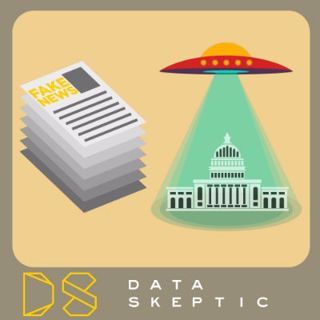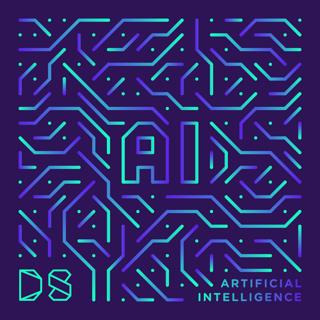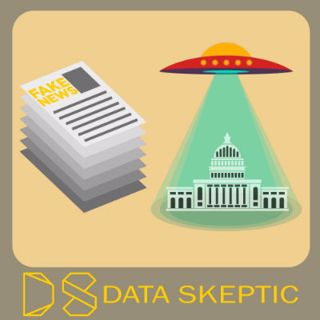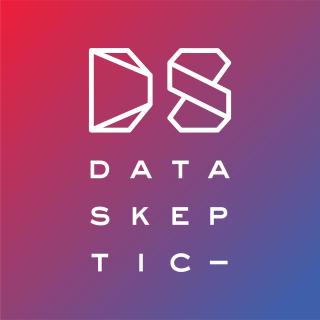
Click Through Rates
A Click Through Rate (CTR) is the proportion of clicks to impressions of some item of content shared online. This terminology is most commonly used in digital advertising but applies just as well to content websites might choose to feature on their homepage or in search results. A CTR is intuitively appealing as a metric for optimization. After all, if users are disinterested in some content, under normal circumstances, it's reasonable to assume they would ignore the content, rather than clicking on it. On the other hand, the best content is likely to elicit a high CTR as users signal their interest by following the hyperlink. In the advertising world, a website could charge per impression, per click, or per action. Both impression and action based pricing have asymmetrical results for the publisher and advertiser. However, paying per click (CPC based advertising) seems to strike a nice balance. For this and other numeric reasons, many digital advertising mechanisms (such as Google Adwords) use CPC as the payment mechanism. When charging per click, an advertising platform will value a high CTR when selecting which ad to show. As we learned in our episode on Goodhart's Law, once a measure is turned into a target, it ceases to be a good measure. While CTR alone does not entirely drive most online advertising algorithms, it does play an important role. Thus, advertisers are incentivized to adopt strategies that maximize CTR. On the surface, this sounds like a great idea: provide internet users what they are looking for, and be awarded with their attention and lower advertising costs. However, one possible unintended consequence of this type of optimization is the creation of ads which are designed solely to generate clicks, regardless of if the users are happy with the page they visit after clicking a link. So, at least in part, websites that optimize for higher CTRs are going to favor content that does a good job getting viewers to click it. Getting a user to view a page is not totally synonymous with getting a user to appreciate the content of a page. The gap between the algorithmic goal and the user experience could be one of the factors that has promoted the creation of fake news.
24 Aug 201831min

Algorithmic Detection of Fake News
The scale and frequency with which information can be distributed on social media makes the problem of fake news a rapidly metastasizing issue. To do any content filtering or labeling demands an algorithmic solution. In today's episode, Kyle interviews Kai Shu and Mike Tamir about their independent work exploring the use of machine learning to detect fake news. Kai Shu and his co-authors published Fake News Detection on Social Media: A Data Mining Perspective, a research paper which both surveys the existing literature and organizes the structure of the problem in a robust way. Mike Tamir led the development of fakerfact.org, a website and Chrome/Firefox plugin which leverages machine learning to try and predict the category of a previously unseen web page, with categories like opinion, wiki, and fake news.
17 Aug 201846min

Ant Intelligence
If you prepared a list of creatures regarded as highly intelligent, it's unlikely ants would make the cut. This is expected, as on an individual level, ants do not generally display behavior that most humans would regard as intelligence. In fact, it might even be true that most species of ants are unable to learn. Despite this, ant colonies have evolved excellent survival mechanisms through the careful orchestration of ants.
10 Aug 201828min

Human Detection of Fake News
With publications such as "Prior exposure increases perceived accuracy of fake news", "Lazy, not biased: Susceptibility to partisan fake news is better explained by lack of reasoning than by motivated reasoning", and "The science of fake news", Gordon Pennycook is asking and answering analytical questions about the nature of human intuition and fake news. Gordon appeared on Data Skeptic in 2016 to discuss people's ability to recognize pseudo-profound bullshit. This episode explores his work in fake news.
3 Aug 201828min

Spam Filtering with Naive Bayes
Today's spam filters are advanced data driven tools. They rely on a variety of techniques to effectively and often seamlessly filter out junk email from good email. Whitelists, blacklists, traffic analysis, network analysis, and a variety of other tools are probably employed by most major players in this area. Naturally content analysis can be an especially powerful tool for detecting spam. Given the binary nature of the problem ( or ) its clear that this is a great problem to use machine learning to solve. In order to apply machine learning, you first need a labelled training set. Thankfully, many standard corpora of labelled spam data are readily available. Further, if you're working for a company with a spam filtering problem, often asking users to self-moderate or flag things as spam can be an effective way to generate a large amount of labels for "free". With a labeled dataset in hand, a data scientist working on spam filtering must next do feature engineering. This should be done with consideration of the algorithm that will be used. The Naive Bayesian Classifer has been a popular choice for detecting spam because it tends to perform pretty well on high dimensional data, unlike a lot of other ML algorithms. It also is very efficient to compute, making it possible to train a per-user Classifier if one wished to. While we might do some basic NLP tricks, for the most part, we can turn each word in a document (or perhaps each bigram or n-gram in a document) into a feature. The Naive part of the Naive Bayesian Classifier stems from the naive assumption that all features in one's analysis are considered to be independent. If and are known to be independent, then . In other words, you just multiply the probabilities together. Shh, don't tell anyone, but this assumption is actually wrong! Certainly, if a document contains the word algorithm, it's more likely to contain the word probability than some randomly selected document. Thus, Pr(\text{algorithm}) \cdot Pr(\text{probability})" />, violating the assumption. Despite this "flaw", the Naive Bayesian Classifier works remarkably will on many problems. If one employs the common approach of converting a document into bigrams (pairs of words instead of single words), then you can capture a good deal of this correlation indirectly. In the final leg of the discussion, we explore the question of whether or not a Naive Bayesian Classifier would be a good choice for detecting fake news.
27 Juli 201819min

The Spread of Fake News
How does fake news get spread online? Its not just a matter of manipulating search algorithms. The social platforms for sharing play a major role in the distribution of fake news. But how significant of an impact can there be? How significantly can bots influence the spread of fake news? In this episode, Kyle interviews Filippo Menczer, Professor of Computer Science and Informatics. Fil is part of the Observatory on Social Media ([OSoMe][https://osome.iuni.iu.edu/tools/]). OSoMe are the creators of Hoaxy, Botometer, Fakey, and other tools for studying the spread of information on social media. The interview explores these tools and the contributions Bots make to the spread of fake news.
20 Juli 201845min

Fake News
This episode kicks off our new theme of "Fake News" with guests Robert Sheaffer and Brad Schwartz. Fake news is a new label for an old idea. For our purposes, we will define fake news information created to deliberately mislead while masquerading as a legitimate, journalistic source of truth. It's become a modern topic of discussion as our cultures evolve to the fledgling mechanisms of communication introduced by online platforms. What was the earliest incident of fake news? That's a question for which we may never find a satisfying answer. While not the earliest, we present a dramatization of an early example of fake news, which leads us into a discussion with UFO Skeptic Robert Sheaffer. Following that we get into our main interview with Brad Schwartz, author of Broadcast Hysteria: Orson Welles's War of the Worlds and the Art of Fake News.
13 Juli 201838min

Dev Ops for Data Science
We revisit the 2018 Microsoft Build in this episode, focusing on the latest ideas in DevOps. Kyle interviews Cloud Developer Advocates Damien Brady, Paige Bailey, and Donovan Brown to talk about DevOps and data science and databases. For a data scientist, what does it even mean to "build"? Packaging and deployment are things that a data scientist doesn't normally have to consider in their day-to-day work. The process of making an AI app is usually divided into two streams of work: data scientists building machine learning models and app developers building the application for end users to consume. DevOps includes all the parties involved in getting the application deployed and maintained and thinking about all the phases that follow and precede their part of the end solution. So what does DevOps mean for data science? Why should you adopt DevOps best practices? In the first half, Paige and Damian share their views on what DevOps for data science would look like and how it can be introduced to provide continuous integration, delivery, and deployment of data science models. In the second half, Donovan and Damian talk about the DevOps life cycle of putting a database under version control and carrying out deployments through a release pipeline.
11 Juli 201838min





















